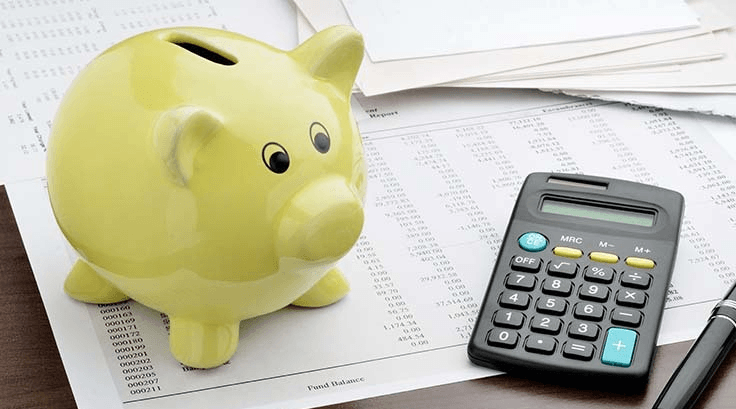
Retirement may seem like a distant event, but it's important to start planning for it now. Especially if you want to ensure you have a stable financial future and not rely solely on a government pension.
Planning for retirement involves taking a detailed look at your current finances, setting long-term financial goals and making informed decisions about how to invest your money. In this article, we will provide you with some tips to help you plan for retirement and ensure a stable financial situation for you and your family.
Retirement is a time in life when many people look forward to relaxing and enjoying the fruits of their labor for years to come. However, in order to do so with peace of mind, it is necessary to plan ahead to ensure a stable financial future.
In this article, we'll give you tips and strategies to help you plan for retirement and ensure that your golden years are truly golden. We'll show you how to estimate how much money you'll need to live comfortably in retirement, how to save and invest to reach your financial goals, and the best investment options for a successful retirement.
No matter what your age or how much money you currently have, it's always a good time to start planning for your financial future. Let's get started!
Know your current income and expenses
The first step to planning for your retirement and ensuring a stable financial future is to know your current income and expenses. To do this, you need to have a detailed record of the monthly income you receive, as well as the expenses you incur each month.
It is important to take into account all your income, including your salary, rental income, interest and dividends from investments, among others. Likewise, you should consider all your expenses, from the basics such as food and housing, to the smaller ones such as online shopping and going out with friends.
Once you have a detailed record of your income and expenses, you will be able to identify areas where you can reduce expenses to save more money each month. This saving is the first step in planning for your retirement and ensuring a stable financial future.
Identify your income
The first thing you should do to plan for your retirement is to know your income. This includes both your current and future income.
To identify your current income, you should make a detailed list of your income sources, including your salary, investment income and any other sources of income you may have.
It is also important to identify your future income. This may include social security, pensions and other retirement plans in which you are enrolled. Make sure you know the terms and conditions of these plans so you can properly plan for your financial future.
Once you have identified your income, you can start thinking about how to manage it and save for retirement. Remember that the earlier you start saving, the more time you will have to build a solid fund for your financial future.
Identify your regular expenses
Before you start planning for your retirement, it is important to identify what your regular monthly expenses are. These expenses include your basic needs such as food, housing, transportation and health. You should also take into account expenses such as debt or loan payments, taxes and any other expenses you have to pay on a regular basis.
Once you identify all your regular expenses, you will have a clearer idea of how much money you need to cover them each month. This will help you determine how much you need to save for a stable, worry-free retirement.
Remember to also consider any unexpected expenses that may arise, such as home repairs or medical emergencies. It is recommended to have an emergency fund that covers at least six months of regular expenses.
Identify your variable expenses
Variable expenses are those that are not a constant in your budget. They can change from month to month, even from week to week. Identifying these expenses will give you better control of your budget and allow you to make adjustments when necessary.
Some examples of variable expenses are:
- Entertainment
- Clothing and accessories
- Travel
- Unplanned medical expenses
- Impulsive purchases
It is important that you take these expenses into account when planning your retirement and ensuring a stable financial future. You should make sure you have sufficient funds to cover them and not neglect your retirement savings.
Define your retirement savings goals
Once you have evaluated your finances and know how much you need to live on in retirement, it is important to set realistic savings goals. This means determining how much money you want to accumulate by the time you retire.
A good way to do this is to use online tools that allow you to calculate how much you should save based on your current age, income and expenses. You should also consider other factors such as the investments you have, inflation and any changes in your long-term income.
Remember that the earlier you start saving for retirement, the better off you'll be. The more time you have to accumulate funds, the less you will have to allocate each month to this goal and the larger your savings will be in the end.
Set a target date for retirement
The first step in planning your retirement is to set a target date. At what age would you like to retire? This will help you calculate how much money you will need to save to reach your financial goals.
It is important to keep in mind that the retirement age may vary depending on the country you live in and your particular situation. In some places the retirement age may be higher or lower, and in others it is possible to retire earlier if you meet certain requirements.
Once you have set a target date, you can start making plans to save the money you need. You will also need to consider other factors, such as whether you plan to work after you retire or whether you will have other sources of income.
Remember, the sooner you start saving, the better prepared you will be to enjoy a comfortable, worry-free retirement. Don't wait any longer, be the master of your financial future by planning your retirement today!
Calculate how much money you will need to maintain your desired lifestyle in retirement
One of the most important steps in retirement planning is determining how much money you will need to maintain your desired lifestyle. To do this, you must consider several factors, such as your current expenses, your future spending expectations and inflation.
You can use various online tools and calculators to help you estimate how much money you will need for retirement. These tools will take into account your current income, savings and other important factors to provide you with an accurate estimate.
Once you have an idea of how much money you'll need, you can start planning how to reach your savings goal. This may include adjusting your spending habits, increasing your pension contributions or exploring other savings and investment options.
Remember that it is important to regularly review your retirement plans and adjust them as needed. Circumstances may change over time, so be prepared to adapt to those situations.
Develop a retirement savings and investment plan
Once you have established your retirement goal and assessed your financial needs, it is important to develop a savings and investment plan to reach that goal. Such a plan can include:
- The amount you need to save: You should know how much money you will need to live comfortably in retirement, and calculate how much you need to save each month or year to achieve that amount.
- Your savings and investment options: There are many options for saving and investing your money, including savings accounts, mutual funds, stocks and bonds. Do your research and consider the options that best suit your financial needs and goals.
- The time frame of your plan: You will need to establish the time frame over which you want to save and invest your money.
- Term: Need to adjust this term as your financial circumstances change.
- Your risk tolerance: You will need to decide what level of risk you are willing to take in investing your money. This will depend on factors such as your age, financial situation and goals.
Don't forget to regularly review your savings and investment plan and make adjustments as needed. Financial planning is an ongoing, dynamic process that requires constant attention to achieve your retirement goals.
Evaluate available savings options (savings accounts, mutual funds, pension plans, etc.).
Once you decide to start saving for retirement, it's important to evaluate all the options available to invest your money and maximize your earnings. Here are some popular options:
- Savings accounts: Savings accounts are a safe and reliable option for storing your money and earning interest. They usually offer a low but fixed interest rate, which means it will remain stable over time.
- Mutual funds: Mutual funds are a popular choice for investors looking to diversify their portfolio. These funds are composed of a variety of stocks, bonds and other securities, which helps minimize the risk of loss.
- Pension plans: Pension plans are offered by many companies as part of their employee benefit packages. These plans allow you to save for retirement with the help of both employer and employee contributions.
It is important that you make a careful evaluation of all available options and consider factors such as the interest rate, level of risk and fees associated with each option before making a decision.
Diversify your investment portfolio to reduce risk and maximize potential returns
A key strategy to ensure a stable financial retirement is to diversify your investment portfolio. This means not putting all your eggs in one basket, but investing in different types of assets with different levels of risk and potential return.
Diversification helps reduce risk because if one type of investment suffers losses, other investments in your portfolio may be able to offset those losses. Diversification can also help you maximize your potential returns by allowing you to invest in a variety of markets and sectors.
To properly diversify your portfolio, you should consider the following factors:
- Your risk tolerance: if you are more conservative, you may want to invest more in less risky instruments, such as bonds or mutual funds. If you are more risky, you might consider investing in individual stocks.
- Your financial goals: If your goal is to generate long-term income for retirement, you might consider investing in real estate or index funds. If you are looking for short-term gains, you might consider investing in individual stocks or cryptocurrencies.
- The time you have to invest: If you have plenty of time until retirement, you may be able to afford to take higher risks because you'll have more time to recoup any losses. If you are approaching retirement, you may want to be more conservative with your investments.
In summary, diversifying your investment portfolio is critical to reducing risk and maximizing potential returns. By considering your risk tolerance, your financial goals and the time you have to invest, you can create a diversified portfolio to help ensure a financially sound retirement.
Review and adjust your plan regularly
Once you've created a retirement plan, you should make sure it's up-to-date and relevant. Circumstances can change over time, so it's important to review and adjust your plan regularly to make sure you're on track to reach your financial goals in retirement.
Among the things to consider when reviewing your retirement plan are changes in your income, expenses, investments and anything else that may affect your finances. If necessary, you can make adjustments to your plan to ensure that it is up-to-date and remains realistic.
Remember that retirement planning is an ongoing process. You shouldn't just create a plan once and forget about it. You should review it regularly and make changes as needed to ensure you reach your long-term financial goals.
Keep constant track of your progress toward your retirement savings goals
Once you have established your retirement savings goals, it is important to constantly track your progress. This will allow you to assess whether you are on track to reach your goals and make adjustments if you are not.
There are a number of tools and resources available that can help you keep detailed track of your finances and savings. Some examples include:
- Mobile budgeting and savings apps.
- Customized spreadsheets to keep detailed records of income, expenses and savings.
- Financial advisors who can offer recommendations and advice specific to your financial situation.
It's important to remember that constantly tracking your progress toward your retirement savings goals doesn't mean obsessing over the numbers. You need to be realistic and flexible, as unforeseen situations may arise that affect your finances. The important thing is to keep a positive mindset and focus on your ultimate goal: a stable and secure financial retirement.
Adjust your plan as needed in response to changing financial or personal circumstances
It's important to keep in mind that retirement planning is not something you do once and forget. Financial and personal circumstances can change over time, which means your retirement plan should also adjust accordingly. For example, if you've experienced significant changes in your income or expenses, it may be necessary to review your budget and adjust your retirement savings plan.
If you have had a change in your health status or that of a loved one, your future health care and insurance needs may need to be reconsidered. Also, your retirement goals may change over time. For example, if you planned to travel a lot during retirement but later find that you prefer to spend more time with family, you may need to adjust your financial plan to reflect this changed priority. In general, it's important to be open to making adjustments and adaptations as your circumstances change. By maintaining a flexible and proactive attitude toward retirement planning, you can ensure a stable and fulfilling financial future.
Conclusion
In conclusion, planning for your retirement should not be an overwhelming task. It's always best to start early to give your savings time to grow and take advantage of the tax benefits retirement plans offer. It's important to set clear and realistic goals, and be willing to adjust your plan as your circumstances change.
Be sure to diversify your investments to minimize risk and seek the advice of a financial professional if you have questions or need help developing a plan that's right for you. With proper planning, you can ensure a stable financial future and enjoy a comfortable retirement.






